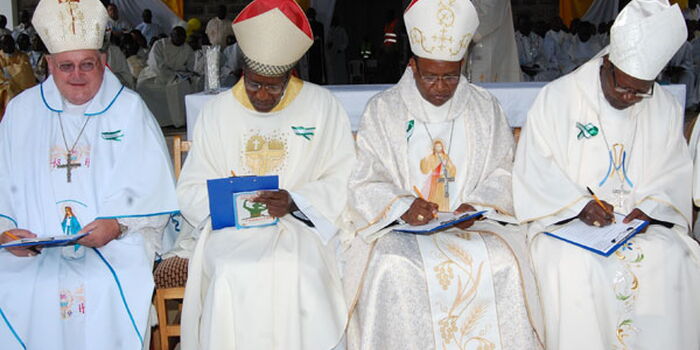As the Catholic Church mourns the death of Pope Francis, all eyes now turn to the Vatican where preparations are underway to select a new leader for the Church.
Pope Francis passed away on Easter Monday, April 21, 2025, after struggling with double pneumonia for over a month.
He died peacefully at the age of 88 in his Vatican residence, Casa Santa Marta, according to a statement shared by Vatican News on social media.
When a Pope dies or resigns, the Catholic Church enters a special period called Sede Vacante, which is Latin for “the seat is vacant.”
This marks a time when the position of Pope is officially empty. During this time, the Church begins the process of choosing a new Pope, known as a papal conclave.
This process is deeply rooted in centuries of Catholic tradition, guided by both spiritual and practical considerations.
The papal conclave follows a detailed and sacred procedure. Although there are no formal campaigns like in political elections, many factors come into play when choosing a new Pope.
The cardinals, who are senior Church leaders, think carefully about the current challenges facing the Catholic Church.
These may include theological issues, the need for reforms, global Church relations, and the growth of Catholicism in various parts of the world.
When considering a candidate, the cardinals usually look for someone with strong theological understanding, experience in leadership as a bishop or cardinal, good administrative skills (especially if reforms are needed), and excellent communication abilities to speak to Catholics across the globe.
Geographical representation is also a key factor. In the past, Popes were mostly from Italy, but in more recent years, the Church has moved toward a more international outlook.
Cardinals may lean toward choosing someone from a region where Catholicism is rapidly growing, such as Latin America, Africa, or Asia, as a way of recognizing and supporting these communities.
Although the selection process is spiritual and sacred, there are sometimes informal groupings or alliances among the cardinals based on different theological views—such as conservative, progressive, or reform-minded approaches.
These groups may quietly support candidates who reflect their vision for the future of the Church.
After a Pope’s death, like in the case of Pope Francis, the Camerlengo (also known as the Cardinal Chamberlain) officially confirms the death and starts the arrangements for the Pope’s funeral.
A papal funeral is a highly detailed ceremony with special prayers, rituals, and traditions.
At the same time, the Church prepares for the conclave. Cardinals from around the world travel to the Vatican.
While waiting, the College of Cardinals, the body that temporarily runs the Church, holds several meetings to talk about what kind of leader the Church needs next.
This college is made up of cardinal bishops, cardinal priests, and cardinal deacons, each with unique roles. They are chosen by the Pope and serve as his closest advisors.
However, only cardinals who are under the age of 80 are allowed to vote in the conclave. Once all the eligible cardinals have arrived, the famous Sistine Chapel is carefully prepared for the secret voting process. All contact with the outside world is cut off to protect the secrecy of the election.
Before voting begins, the cardinals take a solemn oath to maintain strict secrecy throughout the entire process.
The conclave officially begins with the announcement “Extra Omnes”, which means “Everyone out,” signaling that only those allowed to vote may remain inside the chapel.
A special Mass called “Pro Eligendo Pontifice” (For the Election of the Pontiff) is also held to seek God’s guidance in choosing the new Pope.
The voting takes place through a series of secret ballots. Each voting cardinal writes the name of his preferred candidate on a ballot.
To be elected as Pope, a candidate must receive at least two-thirds of the total votes. After each vote, the ballots are collected and burned.
If no one is elected, the smoke coming out of the Sistine Chapel chimney is black (fumata nera).
This tells the world that the Church has not yet chosen a new Pope. When someone is finally chosen, the ballots produce white smoke (fumata bianca), signaling that a new Pope has been elected.
Once a candidate receives enough votes, he is asked, “Do you accept your election as Supreme Pontiff?” If he accepts, he then chooses a new name by which he will be known as Pope.
After this, the senior cardinal deacon steps out onto the balcony of St. Peter’s Basilica and announces to the public: “Habemus Papam” – Latin for “We have a Pope.”
He then reveals the chosen name of the new Pope. Shortly after, the new Pope appears on the balcony to greet the people and deliver his first official blessing to the world.
This entire process is both deeply spiritual and filled with tradition, showing the seriousness and sacredness of choosing the leader of the world’s largest Christian Church.
Join Our Political Forum official 2025 WhatsApp Channel To Stay Updated On time https://whatsapp.com/channel/0029VaWT5gSGufImU8R0DO30


